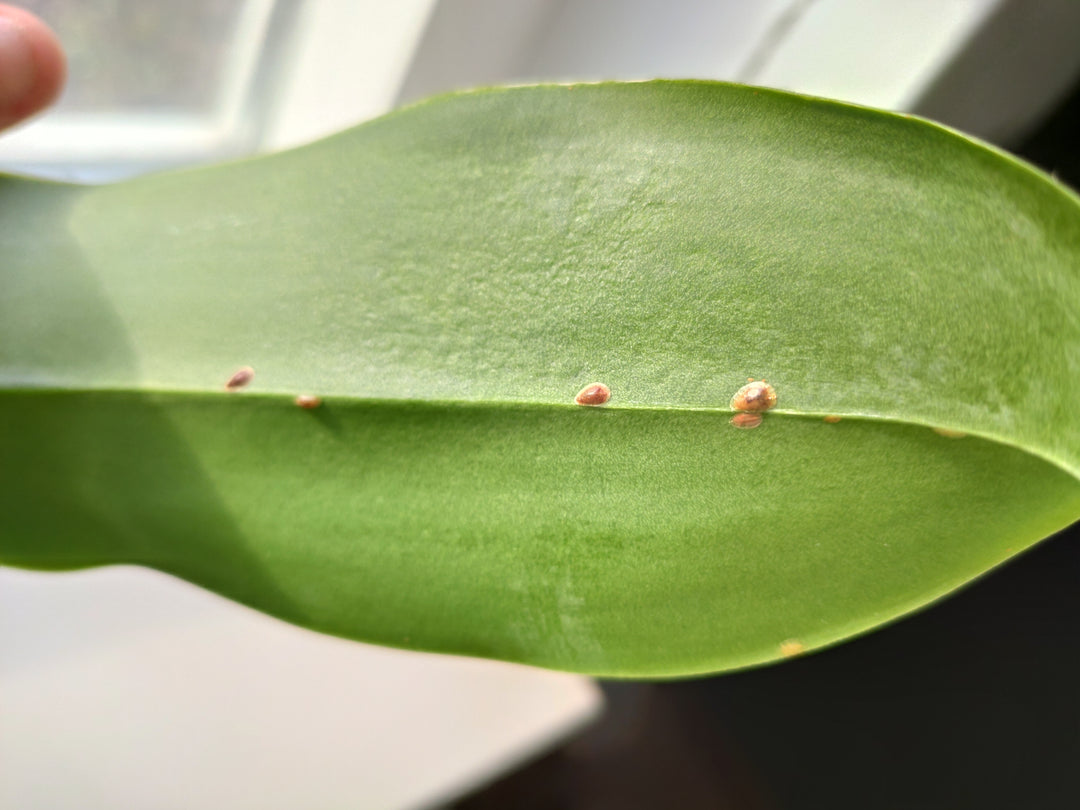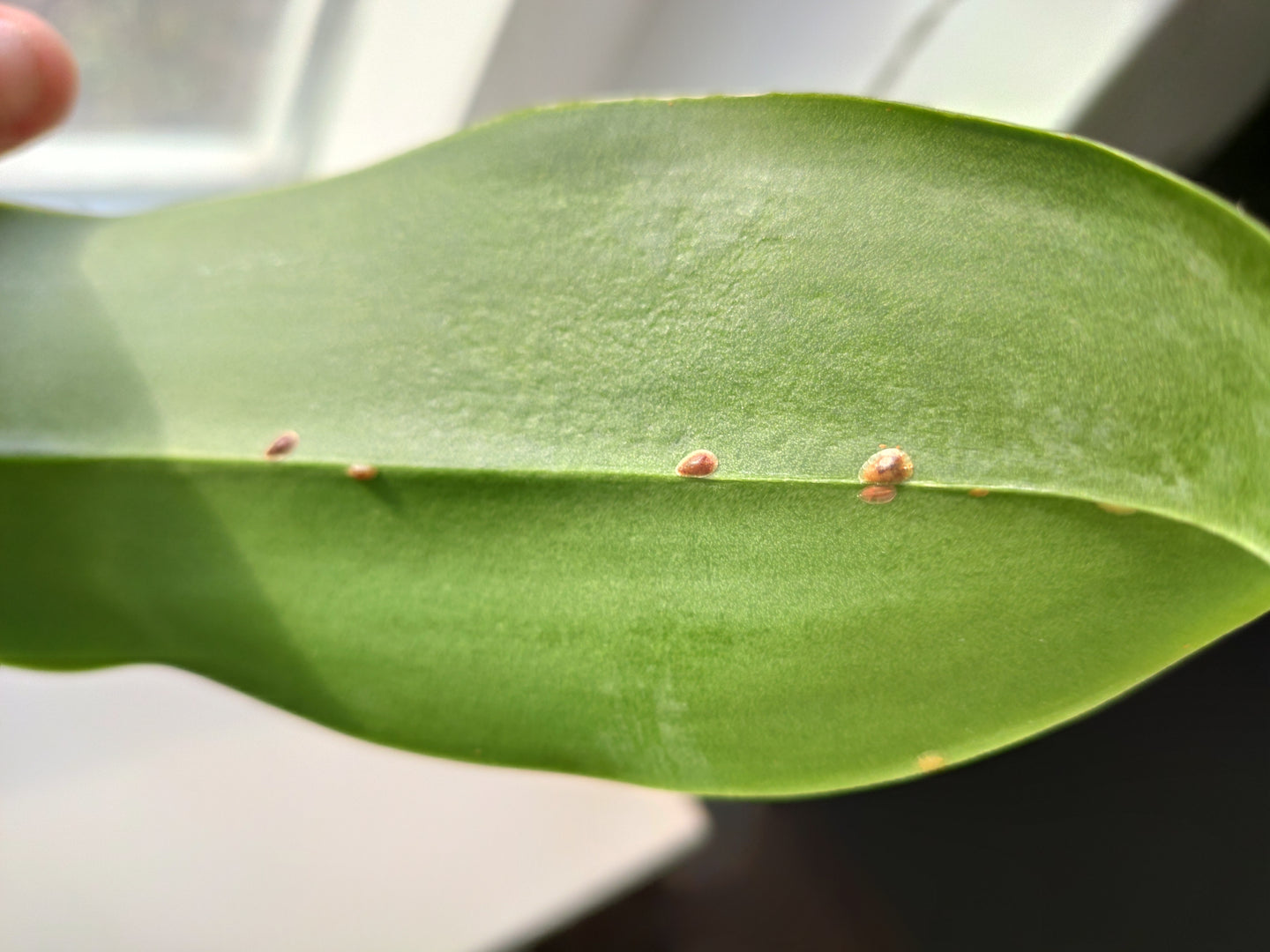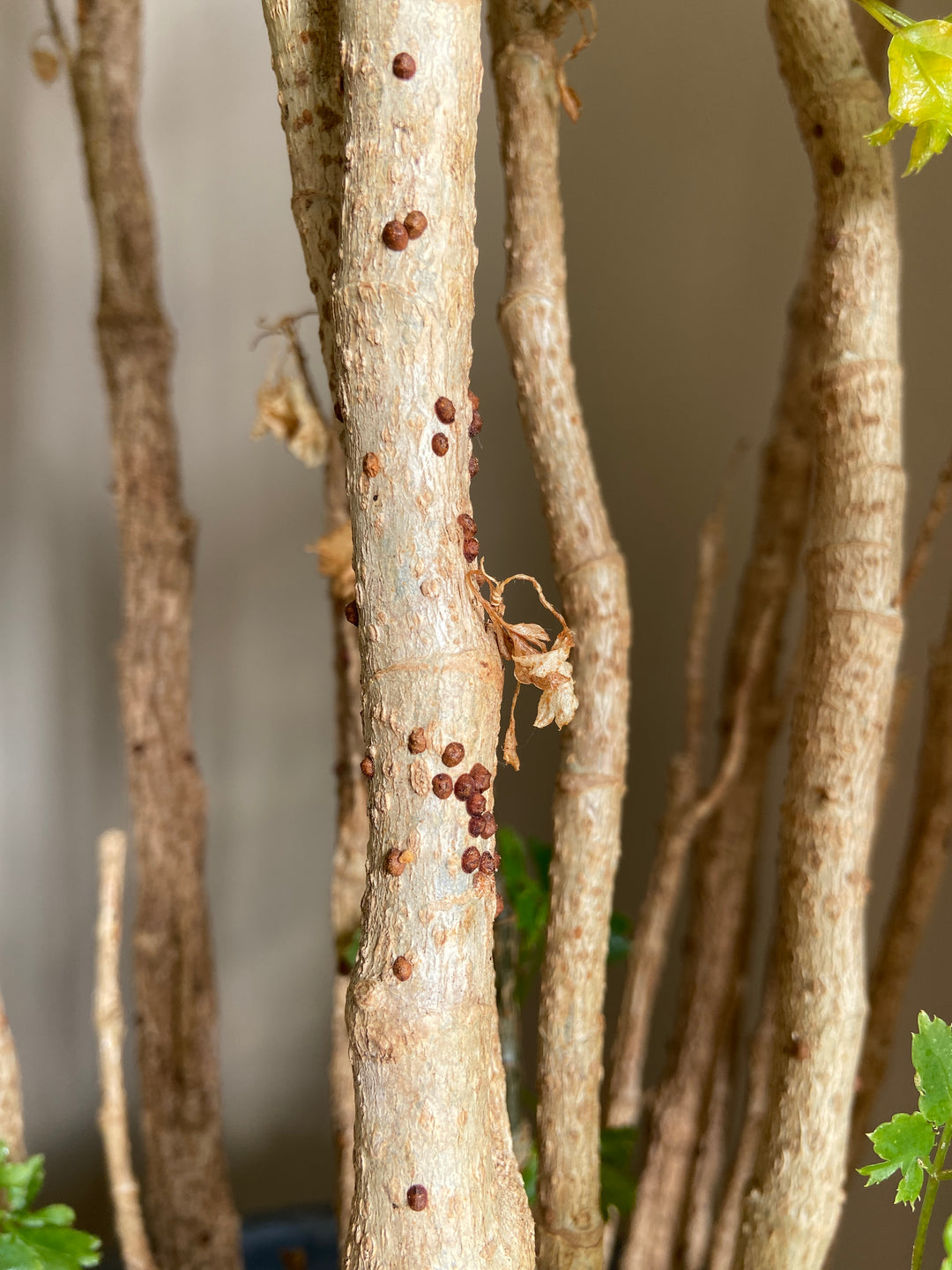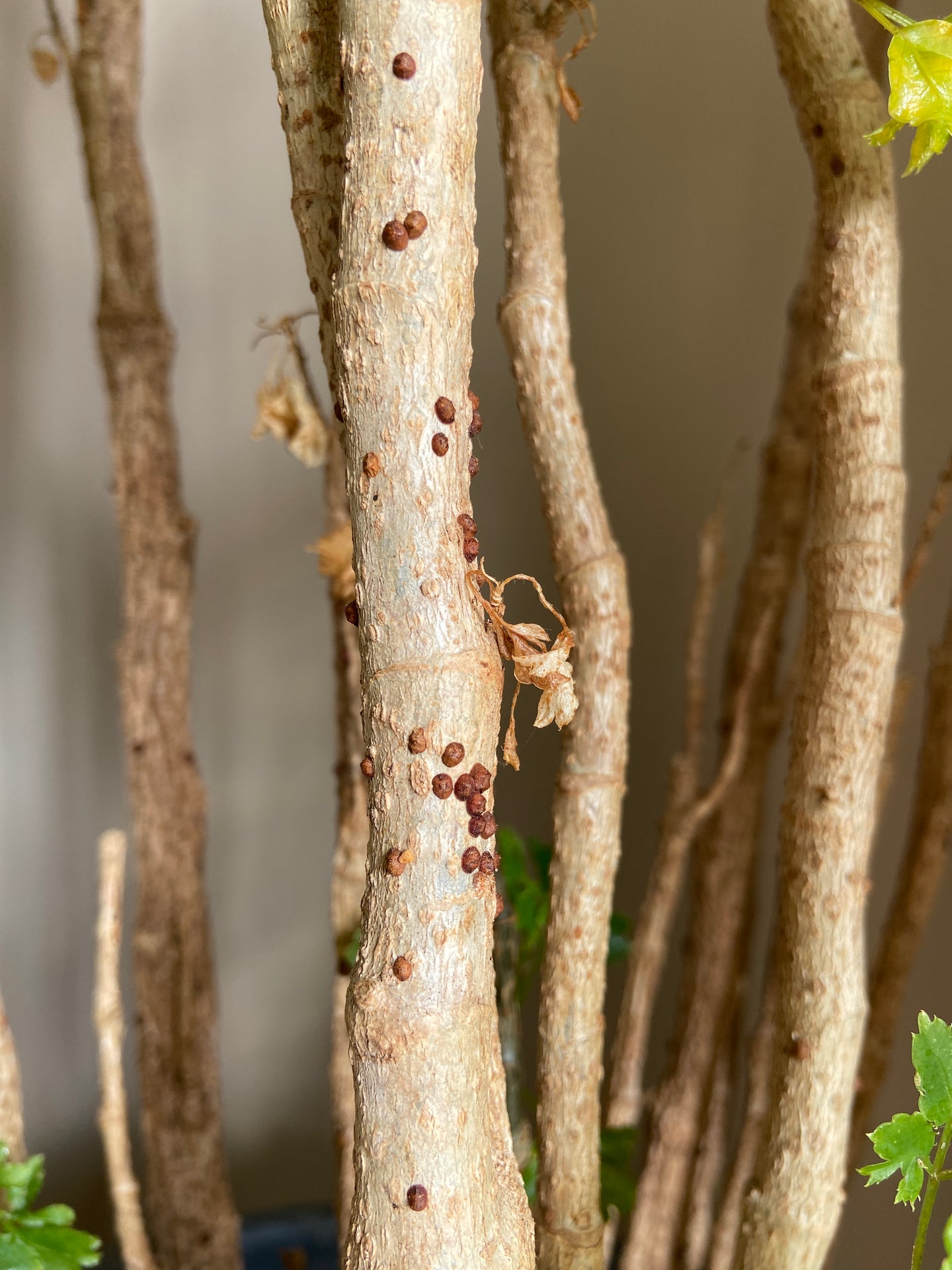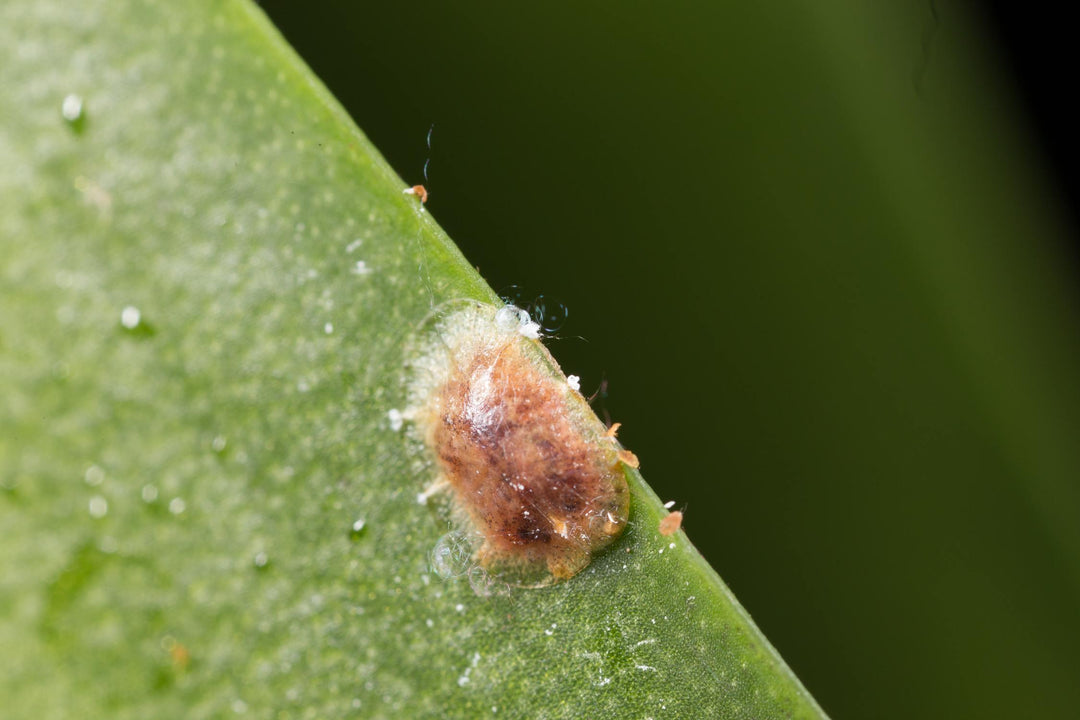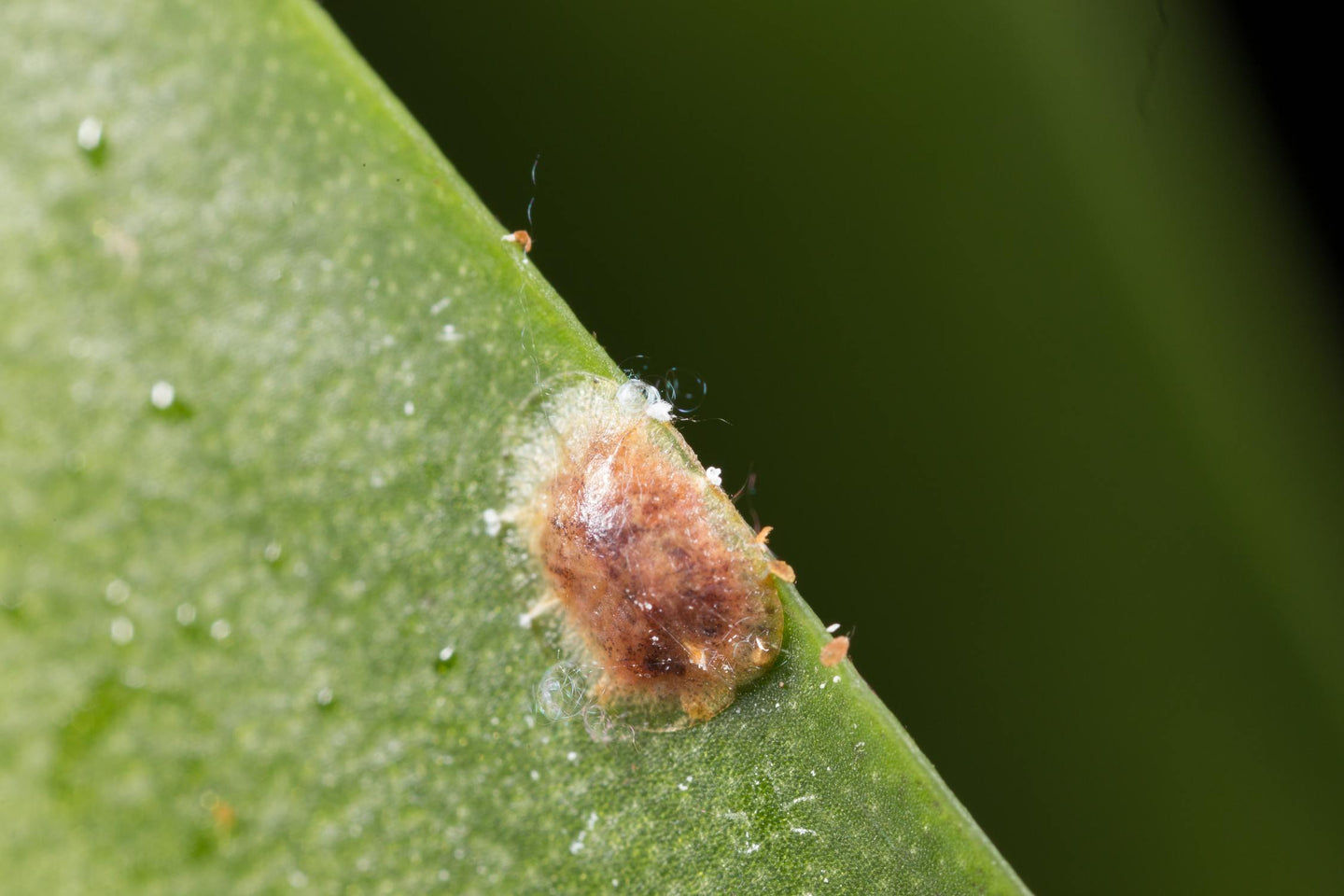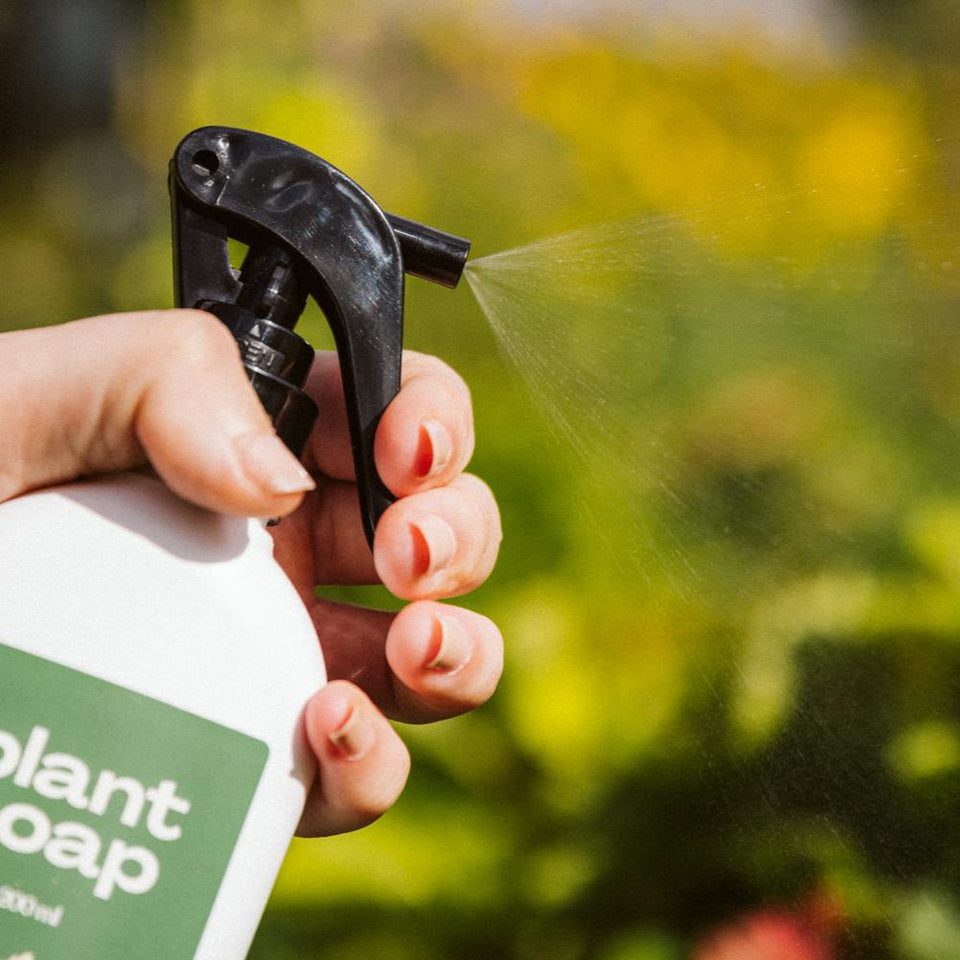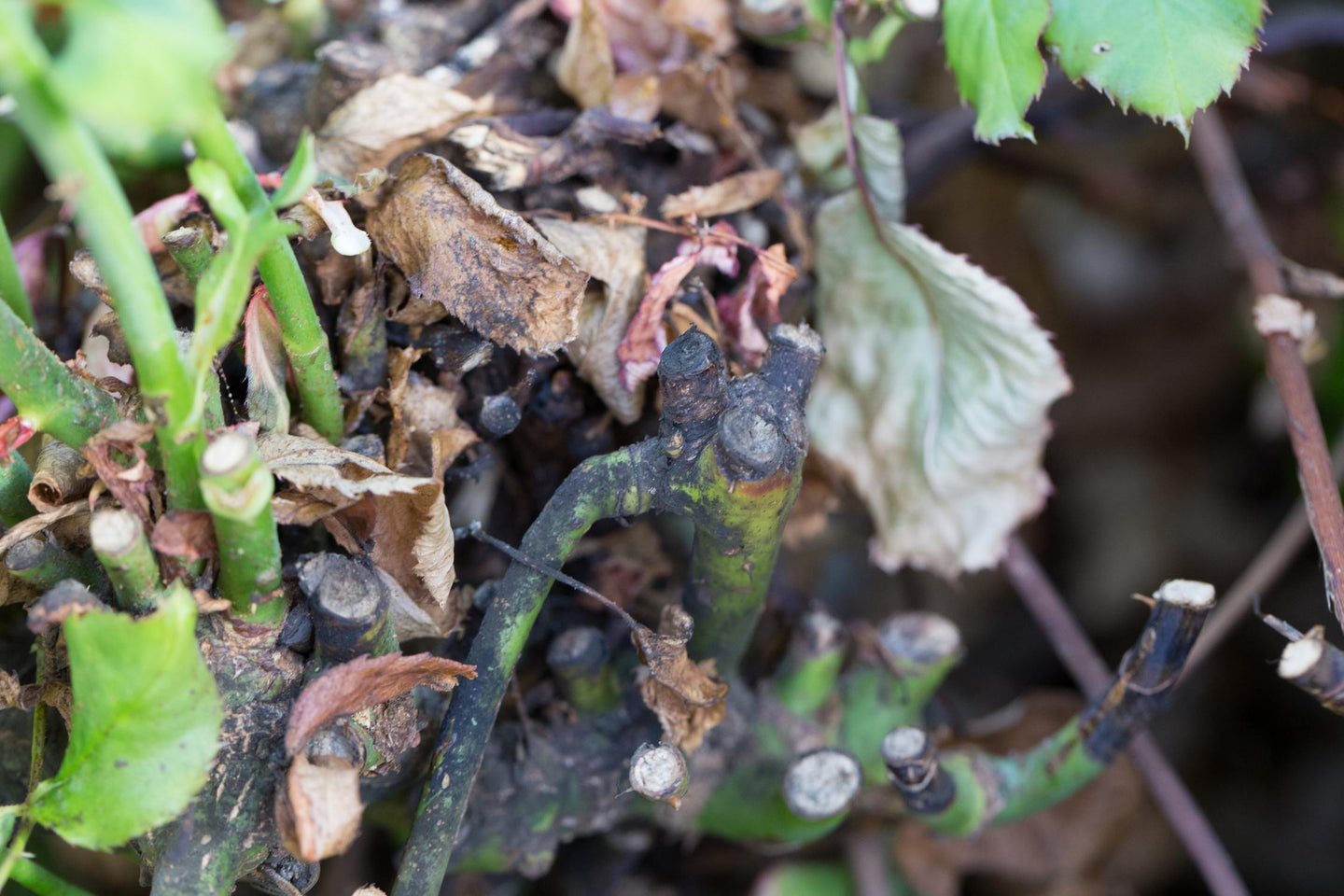Recognizing and combating scale insects
Recognizing scale
Brown 'caps' or bumps on the leaves or stem of your plant? This could just be fluff! Aphid doesn't really look like an animal. This is because the female is hidden under a shield and does not move. The shield is fused with the insect. In this way, the shellfish protects itself against natural enemies and protects its eggs. Light-colored nymphs hatch from the eggs and are more difficult to detect due to their light color.
You can scratch scales off the plant with your fingernail. This way you know that it is a bug and, for example, not a thickening of the stem. Aphids like to live near the veins of the leaves or on the stem.
The shellfish males look different from the females: they have wings and a shell is missing. However, presence of males is rare.
Aphid development
Female shellfish protect their eggs under their shell. Small light-colored nymphs, also called 'crawlers', hatch from the eggs. The crawlers can spread quickly over the plant. After a while, the crawlers settle in a permanent place and form a shield. This is how they grow into an adult female mealybug. Males can also occur, but are very rare.
Aphid damage
Sticky leaves reveal the presence of aphids. The aphids absorb plant sap from the plant. The excess sugar is excreted as a sticky liquid. The sweet substance is called 'honeydew'. Sooty mold fungi can grow on the honeydew, causing the leaves and branches to be covered with a black layer.
Combating scale insects
Scale can best be cleaned up with Plant Soap . The Plant Soap spray consists of 100% natural substances and does not contain any poison. Spray the bottom and top of the leaves well. The Plant Soap forms a layer around the aphids. The treatment can be repeated after one week to thoroughly clean the plant.
View our overview page with all pests.









































